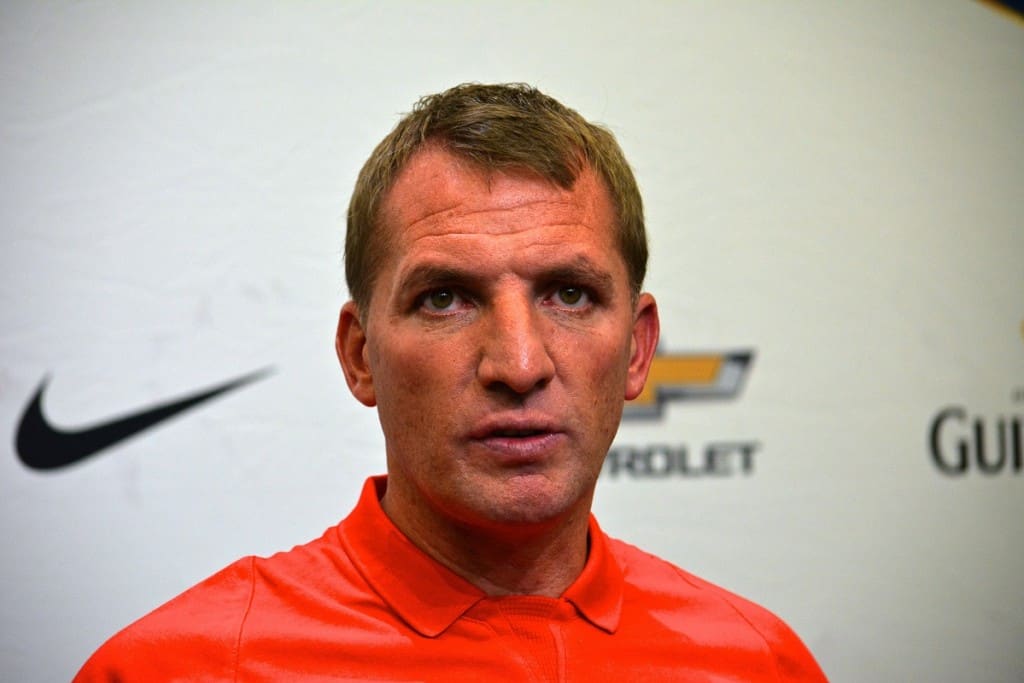By David de Winter – Sports Editor
@davidjdewinter @TLE_Sport
Liverpool’s 2-1 victory over Manchester City on Sunday extended their unbeaten record in the Premier League to 11 games. Yet just three months ago after a 3-1 defeat at Crystal Palace there were more than a few whispers that manager Brendan Rodgers could be heading for the sack. So how has Rodgers turned a team of chronic underperformers into the league’s form side?
First and foremost, the answer is time. Following Luis Suarez’s exit to Barcelona, Liverpool brought in eight major signings, all of whom needed time to become seeped in the club’s playing philosophy and some of whom needed to adapt to the rigours of the Premier League.
Initially almost all of the new signings had teething problems: Mario Balotelli’s work rate was dreadful, much like his finishing; Dejan Lovren made a couple of high profile mistakes, Javier Manquillo and Lazar Markovic both looked decidedly lightweight, and Emre Çan and Rickie Lambert couldn’t adapt to the pace at which Brendan Rodgers wanted to play. Daniel Sturridge’s injury was a hammer blow because his movement and pace gave Liverpool an extra dimension which was somewhat lacking in his replacement Balotelli.
Many people questioned Rodgers’ decision to move Raheem Sterling into a central role – as almost a false nine. It was argued that Sterling was not big enough to play up top and that Liverpool would lose his most dangerous asset – his pace when running at defenders. However Rodgers had engineered a masterstroke. Sterling’s willingness to make runs in behind the back four or into the channels dragged defenders with him, freeing space for the likes of Philippe Coutinho, Adam Lallana, Steven Gerrard, Markovic and Sterling himself to wreak havoc (in the 3-0 defeat at Old Trafford in December, even though Sterling couldn’t hit a barn door, he still terrorised the United defence).
Much has been made of the 3-4-3 formation Rodgers is currently employing. It has coincided with a period of defensive stability that seemed light years away as recently as December. The presence of Emre Çan has given the defence a genuine ball player who can start moves from the back. Nonetheless the most important aspect of the formation is that it allows the front three to press the opposition high up the field – indeed Liverpool’s opening goal on Sunday came as a result of this. Pressurising the opposition back four means they have less time to pick a pass and instead often resort to lumping the ball aimlessly forward where it can be dealt with by the defenders. It demands incredible fitness and commitment from the midfield four, especially the wing-backs but if they are willing to press as a unit as well as do their defensive duties it is an extremely effective system.
The impact the front three of Sterling, Lallana and Coutinho (and Sturridge too) cannot be underestimated. Their constant movement is astonishingly effective. Defences find them very difficult to mark because they are either running in behind, dropping off between the midfield and defence or drifting across the back four, either dragging defenders out of position or creating confusion about who to mark.
Argentina attempted to employ the same formation in the early 2000’s with Walter Samuel, current Spurs manager Mauricio Pochettino and Diego Placente/Roberto Ayala as the three centre backs; Juan Pablo Sorin, Juan Sebastian Veron, Diego Simeone and Javier Zanetti were the midfield, and Ariel Ortega and Claudio Lopez would start either side of Gabriel Batistuta or Hernan Crespo. Argentina, however, played at a much slower tempo and whilst Zanetti and Sorin would hare up and down the touchline, the front three would rarely pressurise the defence and the likes of Veron and the other playmaker Juan Roman Riquelme were not exactly known as workhorses which eventually contributed to their shock group stage exit at the 2002 World Cup.
Liverpool and Rodgers however have found a winning formula and one which has recently been without the influence of injured captain Steven Gerrard. It is refreshing and reassuring to see that after Gerrard’s departure this summer players such as Jordan Henderson are capable of filling the great man’s enormous shoes. What Henderson might lack in talent compared to Gerrard he most certainly makes up for in application. If the whole team continue to work together as the well-oiled machine they currently are then a top four finish is well within their grasp.


